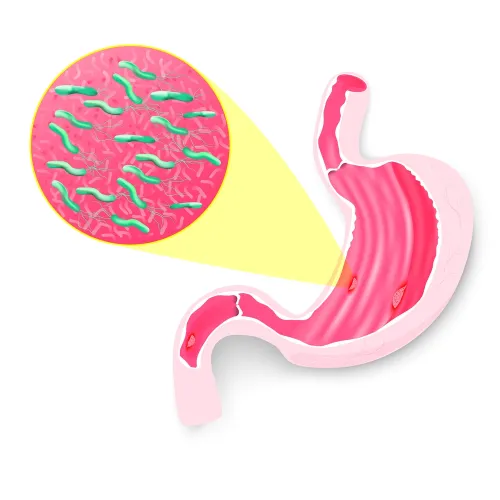Generate Clean EUS Claims With This Advice
Don’t miss parallel FNA codes.
When your general surgeon performs an endoscopic ultrasound (EUS) of the lower gastrointestinal (GI) tract, you’ll need to be sure you’re bringing a good understanding of relevant 2015 CPT® code changes to the table.
That’s why we’re giving you the following pointers to navigate the coding pitfalls and make sure you bring home the pay your general surgeon deserves.
Clinical insight: Your surgeon may perform a lower GI EUS to examine the lining and walls of the rectum, cecum, and colon, up to the small intestine. The surgeon uses an endoscope with an ultrasound component, which he passes through the anus to the target area to visualize the lower digestive tract. Surgeons may perform lower GI EUS for staging and/or diagnosis of colon or rectal cancer.
Guide Your EUS Codes With New Definitions
With CPT® 2015’s updated distinction between colonoscopy and sigmoidoscopy, you’ll need to go through your surgeon’s op notes carefully so you can spot which EUS code best fits the procedure.
Flexible sigmoidoscopy: According to CPT® 2015, you should report flexible sigmoidoscopy if your surgeon doesn’t advance the scope beyond the splenic flexure. You should also report flexible sigmoidoscopy for endoscopic examination of a patient who has undergone resection of the colon proximal to the sigmoid (such as subtotal colectomy) and has an ileo-sigmoid or ileo-rectal anastomosis.
Do this: For an EUS procedure with sigmoidoscopy, report 45341 (Sigmoidoscopy, flexible; with endoscopic ultrasound examination).
Colonoscopy: CPT® 2015 defines colonoscopy as an examination of the entire colon, from the rectum to the cecum, and may include the examination of the terminal ileum or small intestine proximal to an anastomosis. If your surgeon performs a colonoscopy with EUS, you should report code 45391 (Colonoscopy, flexible; with endoscopic ultrasound examination limited to the rectum, sigmoid, descending, transverse, or ascending colon and cecum, and adjacent structures). Your surgeon might use these procedures when a patient has had diverticulitis or scar tissue. Do not report 45391 more than once per session.
Beware bundling issues: “You cannot report 45378 (Colonoscopy, flexible; diagnostic, including collection of specimen[s] by brushing or washing, when performed [separate procedure]) with EUS because this is the base code for 45391,” informs Michael Weinstein, MD, former representative of the AMA’s CPT® Advisory Panel. And modifiers won’t help you. “In other words, you cannot bill these two codes together under any circumstances. You should report only 45391,” he adds.
Colonoscopy through stoma: CPT® 2015 defines colonoscopy through stoma as the examination of the colon from the colostomy stoma to the cecum or colon/small intestine anastomosis, and may include examination of the terminal ileum or small intestine proximal to an anastomosis. If your op notes describe such a procedure along with EUS, you should report newly introduced EUS code 44406 (Colonoscopy through stoma; with endoscopic ultrasound examination, limited to the sigmoid, descending, transverse, or ascending colon and cecum and adjacent structures).
You cannot report 44406 with 44388 (Colonoscopy through stoma; diagnostic, including collection of specimen(s) by brushing or washing, when performed [separate procedure]), because the EUS service includes the base colonoscopy.
Combine Appropriate EUS and FNA Codes
Each of the EUS codes corresponds to a related fine needle aspiration (FNA) code. If your physician performs a rectal-approach endoscopy with EUS and FNA, you should report one of the following codes instead of one of the EUS codes discussed above:
Example: A 62-year-old male with hematochezia and anemia presents for a flex sigmoidoscopy. At the time of the exam, the surgeon finds enlarged perirectal lymph nodes, and proceeds to perform an EUS FNA.
Solution: You should report the procedure using 45342. Do not report 45341 in addition to the EUS/FNA code (45342). CPT® includes the base diagnostic flex sigmoidoscopy code and the flex sig EUS code with the EUS/FNA code.
Beware of Medicare
You have the requisite codes in hand, but if you think you can bill Medicare with them, you’re inviting trouble. CMS doesn’t accept some of the CPT® 2015 lower GI endoscopy codes in the 2015 calendar year (CY), because the Relative-Value Update Committee (RUC) hasn’t valued them. CMS has created G codes for specific lower GI endoscopy services to allow practitioners to report services provided to Medicare beneficiaries in CY 2015 the same way they did in CY 2014.
For existing procedures that have new CPT® code assignments in 2015, CMS requires physicians to report a G code instead. Instead of 44407, you should bill Medicare using G6021 (Unlisted procedure, intestine).
Resist Reporting Radiology Codes With EUS
When the physician supervises and interprets the needle placement or the endoscopic ultrasound, CPT® and the Correct Coding Initiative (CCI) restrict the use of three radiology codes with EUS/FNA, as follows:




